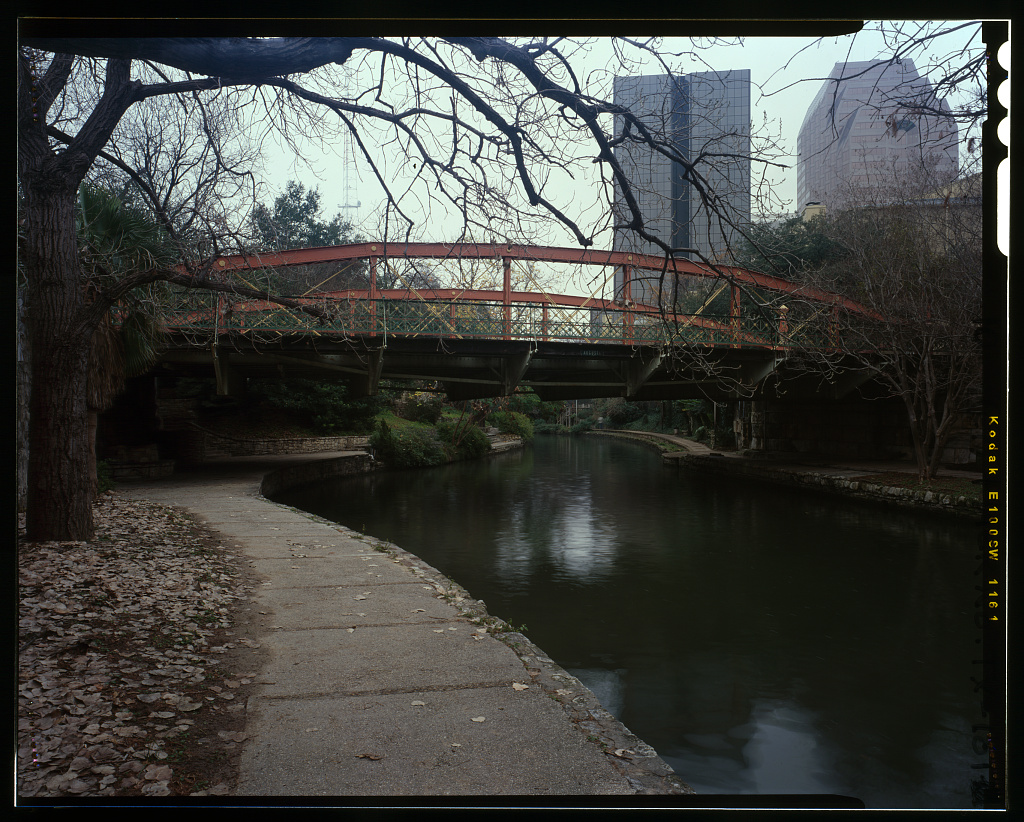Lenticular Trusses of Texas: Unique Truss West of the Mississippi River
Author: Melinda Luna PE
March 2024
The Lenticular Truss was first used in Europe in about 1820. The design was modified as it came to the United States and started to be built these types of bridges in 1870. These bridges are sometimes referred to as “pumpkin-seed bridges”, “fish-belly bridges”, Cats eye bridges, elliptical truss bridges, double bowstring, and parabolic truss bridges. They have a lens shape rather than straight lines like other bridges such as the more commonly known Warren or Howe trusses. The bridge offers a way to carry the load of traffic with less material but also the bridge depends on a higher level of craftsman ship to put together. The curbed members at the top and bottom make for a unique looking bridge. In this research a total of 19 lenticular bridges were found to be built in Texas. All the bridges found were from the Berlin Iron Bridge Company (BIBCO) out of Berlin, Connecticut. The company was first named Corrugated Metal Company but changed its name about 1883. It is believed that over 1,000 of these bridges were built all over the US but mostly in the North East due to the company being in Connecticut. It was probably the largest structural fabricator and employed over 400 workers. The company was bought out by the American Bridge company in 1900.

The table below shows 13 locations of bridges found out of the 18 in the research. There were two other lenticulars bridges sold in Duval county and 3 others in Coryell county where locations could not be found. These bridges were prefabricated and shipped to the location where they were assembled. Most were built around 1893 and on average about 100 feet long. Only 9 still exist and a good place to visit is Bexar County since there are 6 in that area. The reason the concentration of lenticular truss is that William Payson who was the Berlin Iron Bridge Company free-lance agent who lived in San Antonio. William Payson is listed as a contractor in the 1900 census and lived in San Antonio. He also lived in Edna, Texas (Jackson county) for some time. He was in his mid-50’s when he sold these trusses. He was born in 1838 and served as a private in the Civil War..
Patents for Lenticular trusses were issued. The Berlin Iron Bridge company acquired the rights to one of patents from William Douglas and with the help of their freelance agents sold many trusses in this style. At the national level, there were a lot of lenticular bridges sold and this contributed to the success of the company.
In San Antonio documented in the Galveston News article of February 22, 1891, the bridges were loaded tested by having steam road rollers drive over them. In some cases, people were invited to stand on the bridges as the road roller went over it. Perhaps this was an attempt to show the citizens these bridges were able to with stand loads. At the time these bridges were being built, Texas was experiencing an economic upturn. The state was not yet able to start building bridges at a large scale and the citizens of Texas were demanding more reliable and all-weather roads. The job of building more bridges fell to the cities and counties.
In the book Historic Bridges: evaluation Preservation and Management, the Lenticular Trusses of Texas are called unique as every one of the bridges is different. These bridges represent the efforts of the Berlin Iron company over 1500 miles away and still being able to send their hopes of providing a reliable way to cross streams and rivers. Lenticular trusses proved to be short lived type of construction as Pony trusses which was Warren or Howe trusses proved to be cheaper. The average cost of the Texas bridges was about $8,900 dollars which is about $251,000 in 2018 dollars. Each of the trusses has a different story (links on the table provide additional information about the individual trusses). Some of the lenticular trusses are in their original position, others have been moved serving pedestrians, some placed for private use. It is amazing that 4 of the bridges are still in use by automobile traffic when they were designed for the horse and buggy. These four bridges have larger members compared to other lenticular trusses. They have withstood early floods such as the 1921 flood but now are protected because they are in a flood-controlled area in the Riverwalk. These lenticular trusses are the only ones that exist West of the Mississippi River and are an example of American engineering.

1 Harms, Burce. GENERAL VIEW OF AUGUSTA STREET BRIDGE, WEST SIDE, LOOKING EAST. 2001. Library of Congress, https://www.loc.gov/pictures/item/tx0969.color.367056c/.


